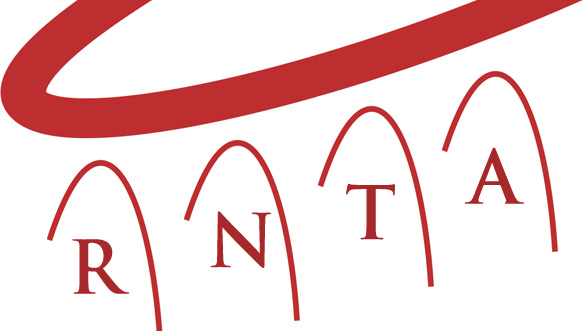Home
Titles and abstracts
Schedule
Practical information
Registration
Contributed talks
11th Atelier PARI/GP
(April 16-17th) |
Friday, April 20th
Morning
On Redei's reciprocity law
Peter Stevenhagen(Universiteit Leiden) | 10:00-10:30 |
In 1938, the Hungarian mathematician Redei defined a ternary
Jacobi-like symbol that he used in the study of quadratic 2-class groups,
and proved a certain reciprocity law for these symbols.
The symbol, which is currently used in answering distribution questions
for quadratic 2-class groups, found its ultimate definition only in the 21st
century. Its modern definition gives rise to a particularly elegant reciprocity
law that we will explain in this talk.
|
Moments of cubic Dirichlet twists over function fields.
Chantal David (Concordia University) | 10:40-11:10 |
We present in this talks results about the first moment of cubic twists of Dirichlet L-functions
over the function field $\mathbb{F}_q(T)$, when $q$ is congruent to $1$ mod $3$ (the Kummer case).
The case of number fields was considered in previous work, but never for the full family of cubic twists over a field containing the third roots of unity.
We first explain the history of the problem, starting with the moments of the Riemann zeta function, the standard conjectures for moments of L-functions and presenting
the previous results, over number fields and function fields.
This is joint work with A. Florea and M. Lalin.
|
Value-distribution of cubic $L$-functions
Amir Akbary (University of Lethbridge) | 11:40-12:10 |
For $k=\mathbb{Q}(\sqrt{-3})$ and an algebraic integer $c\in \mathfrak{O}_k$, let $\zeta_{k(c^{1/3})}(s)$ be
the Dedekind zeta function of the cubic field $k(c^{1/3})$ and $\zeta_k(s)$ be the Dedekind zeta function of $k$. For fixed real $\sigma>1/2$, we study
the asymptotic distribution of the values of the logarithms and the logarithmic derivatives of the Artin $L$-functions
\begin{equation*}
L_c(\sigma)= \frac{\zeta_{k(c^{1/3})}(\sigma)}{\zeta_k(\sigma)},
\end{equation*}
as $c$ varies.
This is joint work with Alia Hamieh (University of Northern British-Columbia).
|
Arithmetic, Hypergeometric Functions, and Mirror Symmetry
Adriana Salerno (Bates College) | 12:20-12:50 |
Mirror symmetry predicts surprising geometric correspondences between distinct families of algebraic varieties. In some cases, these correspondences
have arithmetic consequences. Among the arithmetic correspondences predicted by mirror symmetry are correspondences
between point counts over finite fields, and more generally between factors of their Zeta functions. In this talk, we will
introduce these topics and describe these correspondences. Finally, we will discuss how all of this relates to hypergeometric
functions and hypergeometric motives.
This is joint work with: Charles Doran (University of Alberta, Canada),
Tyler Kelly (University of Cambridge, UK), Steven Sperber (University of Minnesota, USA), John Voight (Dartmouth College, USA), and Ursula Whitcher (American Mathematical Society, USA).
|
Afternoon
Primes of bad reduction of CM curves of genus 3
Elisa Lorenzo Garcia (Université de Rennes 1) | 14:30-15:00 |
In a first joint work [BCLLMNO] and a continuation [KLLNOS], we were able to give a bound for the primes of bad reducction of CM curves of genus 3.
In the hyperelliptic case, those primes are the only ones dividing the discriminant of these curves. Together with a bound on the exponents of the primes in the discriminant
(on going work [IKLLMMV]) we would be able to give a method for constructing hyperelliptic genus 3 curves with CM by a given order or with a given number of points over a finite field.
Hyperelliptic reduction of a plane smooth quartic
|
Rational points on curves over finite fields and Drinfeld modular varieties
Alp Bassa (Boğaziçi Üniversitesi) | 15:10-15:40 |
The analog of the Riemann Hypothesis for zeta functions of curves over finite fields has been proved by Hasse-Weil and implies strong bounds for the number of
rational points on such curves. However, as noticed by Ihara, for large genera these bounds can be improved significantly.
With the aim of understanding the maximal possible number of rational points on high genus curves a variety of methods
(class field towers, modular curves of various type, explicit equations) have been used, giving in each case curves
of high genus with many rational points. In this talk I will give a short overview of these methods and show how special curves on
Drinfeld modular varieties of higher dimension can be used in the construction of such curves over all non-prime finite fields.
This is joint work with Beelen, Garcia, Stichtenoth
|
Primes of bad reduction of CM curves of genus 3
Christophe Ritzenthaler (Université de Rennes 1) | 16:10-16:40 |
A non hyperelliptic genus 3 curves over a number field can reduce modulo certain primes to a hyperelliptic curve of genus 3. We give a
characterization of these primes in terms of the valuations of Dixmier-Ohno invariants of the corresponding plane quartic. |
Heights and principal ideals of certain cyclotomic fields
René Schoof (Università di Roma Tor Vergata) | 16:50-17:20 |
Recently, Bernat Plans showed that the prime numbers $p$ for which
the prime ideals of the cyclotomic field ${\bf Q}(\zeta_{p-1})$ lying over $p$ are principal,
are precisely the ones in the set
$$
\{2,3,5,7,11,13,17,19,23,29,31,37,41,43,61,67,71\}.
$$
The proof of Plans' theorem is based on computations by Hoshi
and a height estimate due to Amoroso and Dvornicich.
| |


